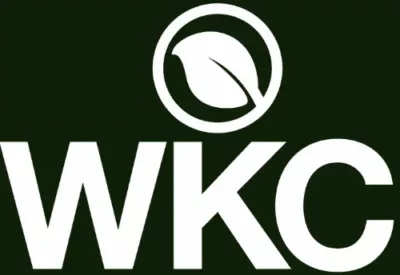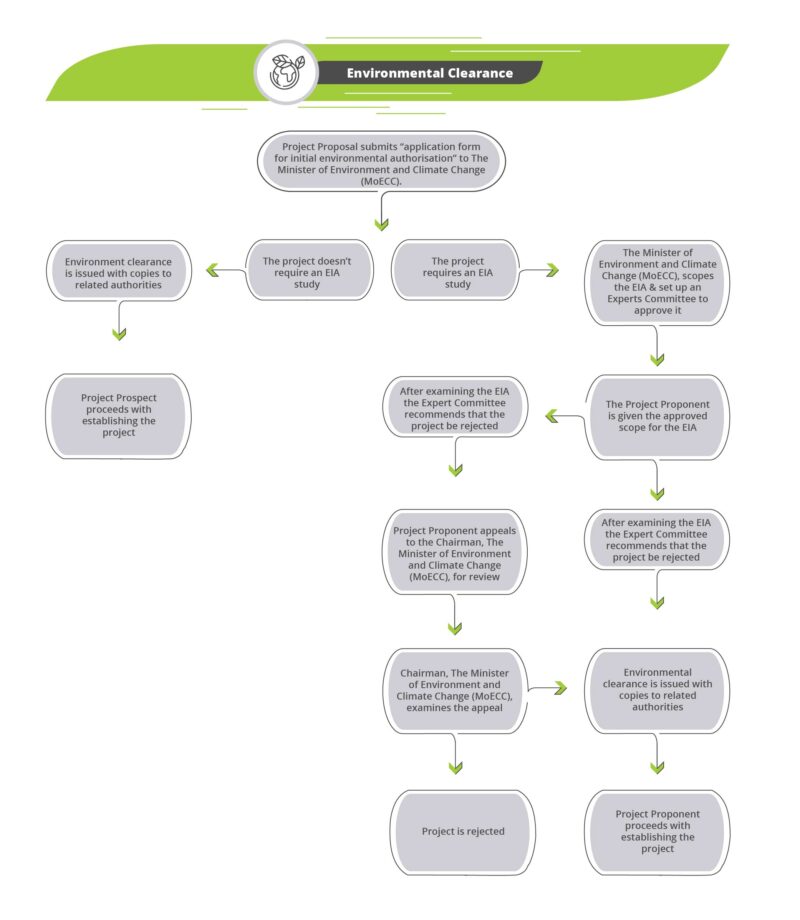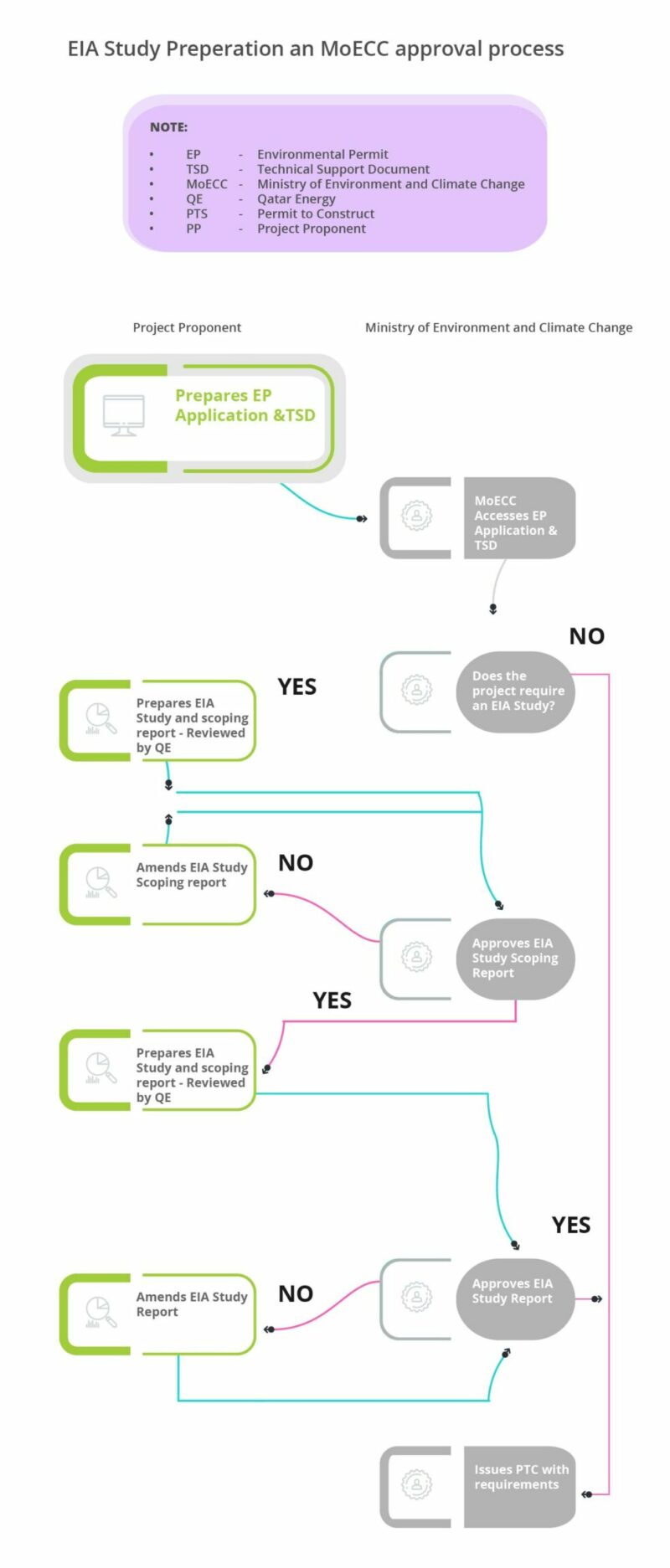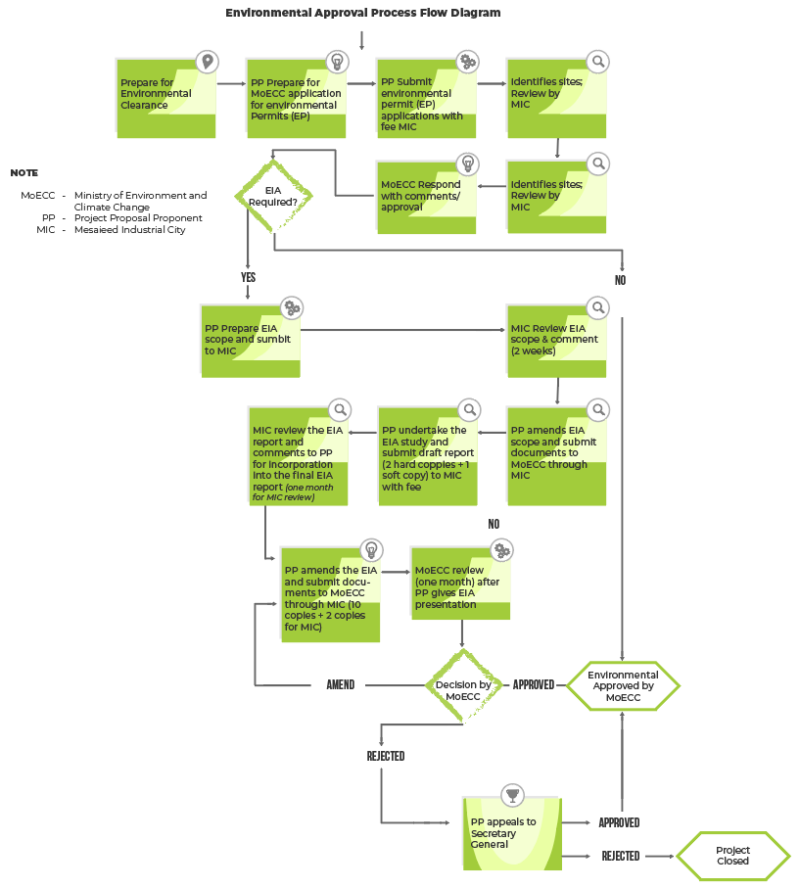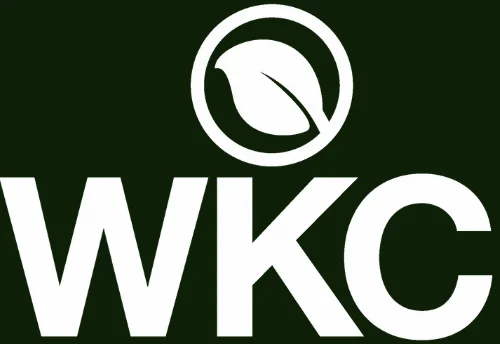Qatar Environmental Permitting System
By Richard Palmer, WKC Group
Qatar, situated on the Arabian Peninsula has the highest GDP per capita worldwide. The country has witnessed economic growth over the last few decades. Qatar’s wealth has been largely fuelled by its vast reserves of gas, which has enabled the country to diversify and grow into a modern state since its independence in 1971.
The two photos below depicts the development of Qatar in the past 50 years.
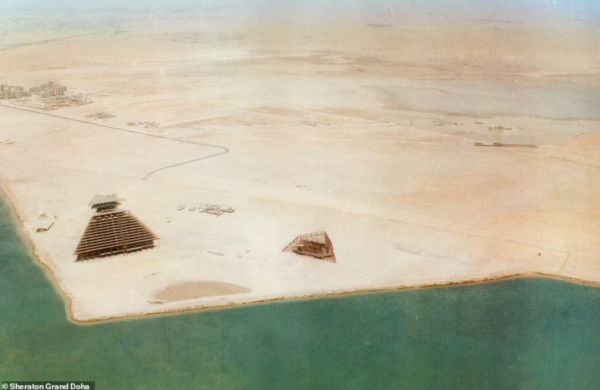
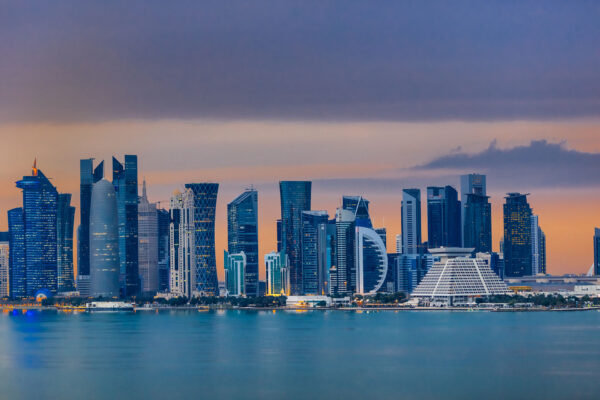
Photo credit of Doha late 1970s: Daily Mail UK
The environmental regulations in Qatar are well presented, fairly aligned with western standards, and have been in force in their current form since 2005, even though the governing environmental authority during this period has undergone restructuring as part of the country’s modernisation. From 2021 the governing body of environmental permitting in Qatar is the Ministry of Environment and Climate Change (MoECC), formerly known as the Ministry of Municipality and Environment (MME, 2016), the Ministry of Environment (MoE, 2008) and before this the Supreme Council for the Environment and Natural Reserves (SCENR, 2000).
Environmental protection and permitting in Qatar is directed by Law No. 30/ 2002 and Executive by-Law No. 11/2005 and is enforced by the MoECC. Annex 1 of the 2005 by-Law stipulates the types of projects that are likely to require an Environmental Impact Assessment (EIA) are as follows:
- Mixed use schemes;
- Tourism resorts;
- Infrastructure works;
- Power and energy services;
- Petrochemical;
- Oil and gas;
- Residential and commercial projects; and
- Industrial facilities.
How Does the Environmental Permitting System Work in Qatar?
The MoECC controls the approvals of environmental permits, although the steps required in order to gain an environmental permit is dependent on where the project is located and can be defined as follows:
- Concession area or facility managed by Qatar Energy
- Ras Laffan Industrial City
- Mesaieed Industrial City
- All other areas
The following sections outline how the permitting process works for each of the areas listed above.
Non-Oil and Gas and Non-Industrial Cites
For all projects that full outside control of Qatar Energy or the defined industrial cities the environmental permitting procedure follows the process outlined Figure 1 below.
Figure 1 – Environmental Permitting System in Qatar
The MoECC’s inhouse Environmental Assessment Department (EAD) reviews, assesses and decides whether an Environmental Impact Assessment (EIA) is required or not, based on the submission of the Environmental Permit Application (Article 18 of Law No. 30). If an EIA is required, the project proponent is requested to prepare a Scoping Report of the intended EIA for comment and approval. If the Scoping Report is approved, the project proponent undertakes and submits the EIA, it is then either rejected or cleared with conditions. Once cleared the proponent receives the Permit to Construct.
Figure 2 – Qatar Energy Environmental Permit Procedure
Oil and Gas Sector – Qatar Energy
Qatar Energy’s (formerly Qatar Petroleum), permitting requirements are firstly to ensure compliance with the MoECC requirements. Guidance on Qatar Energy’s environmental assessment process is presented in QP Guidance Document No:QP-GDL-V-003 (2012) with the requirement for a Scoping Report to be prepared prior to the development of the EIA Report, which is very much aligned with the MoECC process.
Before submitting the Environmental Permit Application to the MoECC, Qatar Energy normally requires the project proponent conduct a preliminary environmental aspects and impacts identification assessment. This is most commonly achieved through an Environmental Impact Identification workshop (ENVID). An ENVID workshop is a scoping tool that allows all parties of the project (operator, engineers and consultants) to evaluate and assess the project activities and the potential associated environmental impacts. The outcomes are collated in an Environmental Risk Register and this is carried forward, and is often very useful for the EIA process.
Figure 2 outlines Qatar Energy’s environmental permitting process post completion of the ENVID workshop and Environmental Risk Register. The process follows the same rational as that presented in Figure 1.
Ras Laffan Industrial City
Ras Laffan Industrial City (RLIC) created in 1996 is an industrial complex located 80 kilometres north of Doha. Ras Laffan is the State’s main site for production of liquefied natural gas (LNG), gas-to-liquid (GTL) and condensate refining.
In 2005, the Ras Laffan Industrial City Environmental Regulations were created by Qatar Petroleum and are additional to those enforced by the MoECC. Under these regulations RLIC may also request an EIA be submitted before commencing one of the following:
- A new development
- Executing a policy or plan
- A major modification to an existing facility
Typically, an EIA will need to be approved 6 month before a new development and 2 months before a major modification. It is the project proponent’s responsibility to prepare and submit the environmental permit documentation that meets the requirements of both the MoECC and RLC regulations.
The project proponent will interface with the RLIC management team on submission and approvals of EIAs to the MoECC. The permitting process follows that outlined in Figure 1.
Mesaieed Industrial City
Mesaieed Industrial City is an industrial area in Al Wakrah Municipality, 40 kilometres south of Doha. It is administered by a subdivision of Qatar Energy called Mesaieed Industry City Management (MIC), which was established in 1996. The Complex contains a mix of petrochemical and heavy industries such as an aluminium smelter and cement works.
The MIC Environmental Approval Process (2006) and Environmental Guidelines and Protection Standards for Mesaieed Industrial City (2011) outline the steps and procedures required to gain an environmental permit within Mesaieed Industrial City. Again, these are additional regulations to those enforced by the MoECC and both need to be met by the project proponent. Figure 3 below presents the environmental permitting process in Mesaieed Industrial City.
Figure 3 – MIC Environmental Permitting Procedure
The process is similar to the standard approach (outlined in Figure 1), with the only difference being MIC act as the point of contact between the project proponent and the MoECC.
In summary, whilst development of many sectors within Qatar continues to take place at an intense pace, a significant degree of environmental protection is offered through rigorous EIA requirements and environmental standards. RLIC and MIC, representing dense areas of industrial development, provides additional environmental protection through the enforcement of additional environmental regulations.
Click below to access our Qatar resources:
